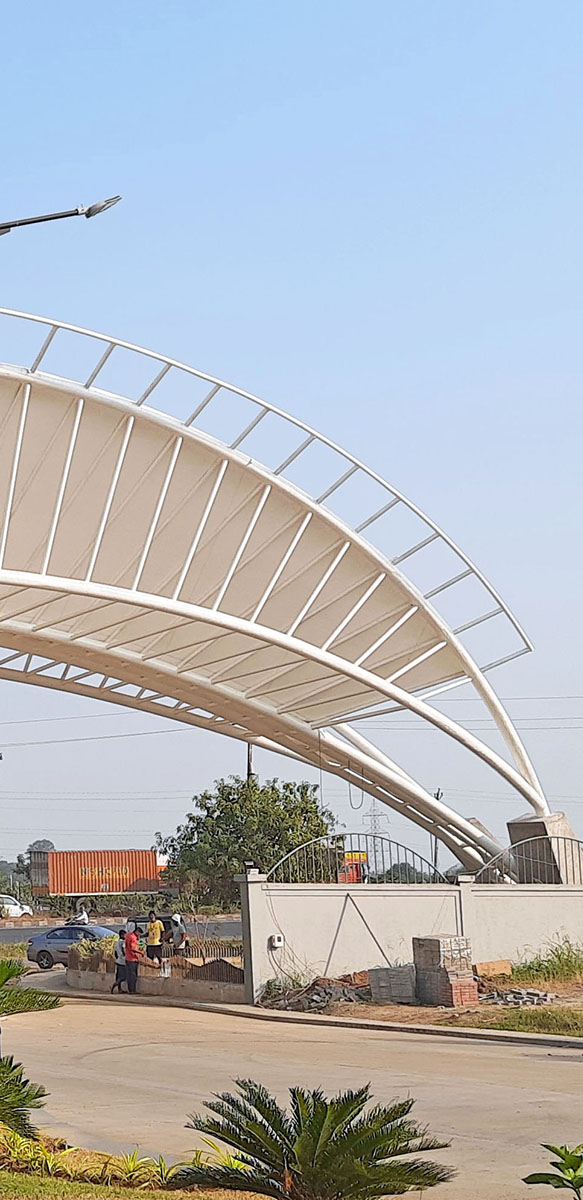
ENTRANCE TENSILE CANOPY
An entrance canopy with a tensile membrane refers to a canopy structure that utilizes a stretched fabric or membrane material to create a lightweight and visually striking roof. Tensile membranes are commonly used in architectural applications due to their versatility, durability, and aesthetic appeal. You can create an attractive and functional entrance canopy with a tensile membrane that enhances the aesthetics of your building while providing protection from the elements. Here are some key aspects to consider when designing an entrance canopy with a tensile membrane:
- Design Concept: Begin by defining the design concept for the entrance canopy. Consider factors such as the architectural style of the building, the desired visual impact, and any functional requirements. The design can range from a simple single-layer canopy to more complex double-layer or multi-layer configurations.
- Material Selection: Tensile membranes are typically made from materials such as PTFE-coated fiberglass, PVC-coated polyester, or ETFE. Each material has its own characteristics and benefits, including durability, translucency, UV resistance, and self-cleaning properties. Select a material that aligns with your design goals, budget, and performance requirements.
- Structural Framework: Tensile membranes rely on a robust structural framework to support and tension the fabric. The framework typically consists of steel cables, masts, or other support elements. Considerations should be given to the type, size, and arrangement of the support structure to achieve the desired form and ensure the proper tension of the membrane.
- Engineering and Analysis: Work closely with structural engineers experienced in tensile membrane design to conduct engineering analysis and calculations. They will determine the optimal configuration for the structural elements and ensure that the canopy can withstand various loads, including wind, snow, and seismic forces.
- Form and Shape: Tensile membrane canopies offer a wide range of design possibilities in terms of form and shape. They can be curved, domed, conical, or even irregularly shaped. The chosen form should enhance the overall aesthetics of the entrance while considering practical aspects such as rainwater drainage and structural stability.
- Lighting and Transparency: Tensile membranes can provide natural lighting effects by allowing sunlight to filter through. Consider incorporating transparent or translucent sections within the membrane to create visually interesting effects and reduce the need for artificial lighting during the day.
- Engineering and Installation: Proper engineering and installation are crucial for the success and longevity of a tensile membrane entrance canopy. Engage with experienced professionals who specialize in tensile structures to ensure that the design meets structural requirements and local building codes. Professional installation is essential to achieve the correct tension of the membrane and secure anchoring points.
- Maintenance and Cleaning: Regular maintenance and cleaning are necessary to keep the tensile membrane in good condition. The frequency and methods of maintenance will depend on the specific material used. Follow the manufacturer's guidelines for cleaning and maintenance to extend the lifespan of the membrane and preserve its appearance.
By carefully considering these aspects and collaborating with professionals specializing in tensile membrane structures, you can create an impressive entrance canopy that combines functionality, visual appeal, and architectural elegance.